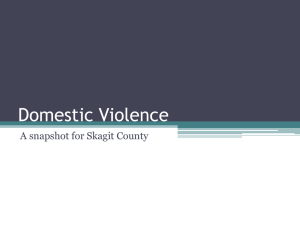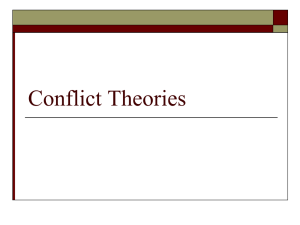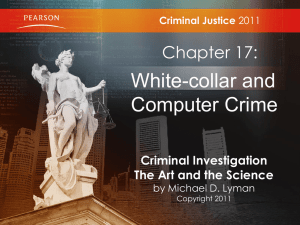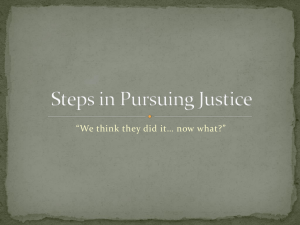Conflict Theories
advertisement
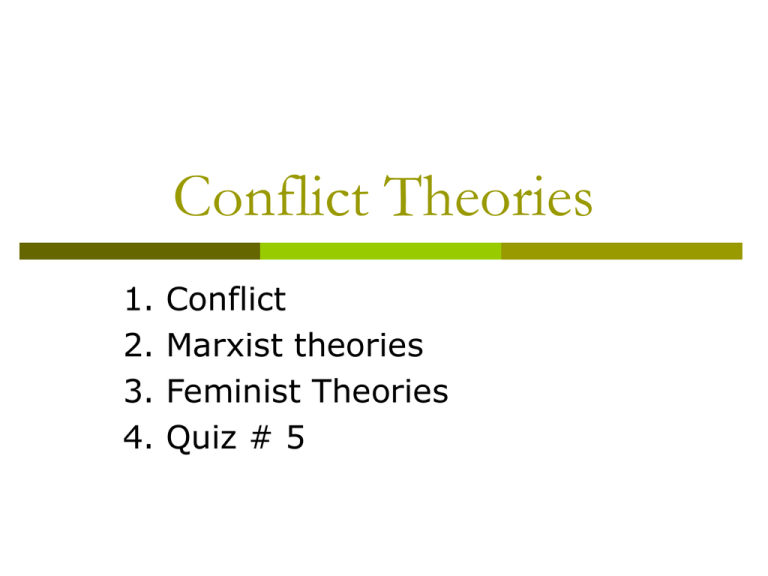
Conflict Theories 1. 2. 3. 4. Conflict Marxist theories Feminist Theories Quiz # 5 Social Policy Childbearing and Pregnancy Prevention Child Support and Low-Income Fathers Workforce Development and Transitional Jobs Prisoner Re-Entry Couples and Marriage Policy Understanding Conflict Conflict is a natural disagreement resulting from individuals or groups that differ in attitudes, beliefs, values or needs It can also originate from past rivalries and personality differences Examples of conflicting values: individualism vs teamwork, family life vs career, What is conflict? Conformity Conformity is the degree to which members of a group will change their views and attitudes to fit the views of the group The group can influence members via unconscious processes or via overt social pressure on individuals Solomon Asch’s experiment (1951) Examined the extent to which pressure from other people could affect one's perceptions He told the subjects he was studying visual perception The task was to decide which of the bars on the right was the same length as the one on the left Solomon Asch’s experiment (1951) Solomon Asch’s experiment (1951) Asch asked the students to give their answers aloud He repeated the procedure with 18 sets of bars Only one student in each group was a real subject All the others have been instructed to give incorrect answers on 12 of the 18 trials Asch arranged for the real subject to be the nextto-the-last person in each group to announce his answer so that he would hear most of the confederates incorrect responses before giving his own Would he go along with the crowd? Findings 37 of the 50 subjects conformed to the majority at least once 14 of them conformed on more than 6 of the 12 trials The mean subject conformed on 4 of the 12 trials Asch was disturbed by these results: "The tendency to conformity in our society is so strong that reasonably intelligent and well-meaning young people are willing to call white black. It raises questions about our ways of education and about the values that guide our conduct." Why did the subjects conform so readily? Interviewed after the experiment Most of them said that they did not really believe their conforming answers, but had gone along with the group for fear of being ridiculed or thought "peculiar." A few of them said that they really did believe the group's answers were correct. Revision Asch conducted a revised version of his experiment Subjects were permitted to write down their answers after hearing the answers of others Their level of conformity declined to about one third what it had been in the original experiment Conclusions People conform for two main reasons: Because they want to be liked by the group Because they believe the group is better informed than they are The group pressure implied by the expressed opinion of other people can lead to modification and distortion effectively making you see almost anything Conformity Herbert Kelman identified three subtypes of conformity: compliance- conforming only publicly, but keeping one's own views in private identification- conforming while a group member, publicly and privately, but not after leaving the group internalization- conforming publicly and privately, during and after group membership The ingredients of conflict Needs - Needs are things that are essential to our well-being. Conflicts arise when we ignore others' needs, our own needs or the group's needs Perceptions - People interpret reality differently. They perceive differences in the severity, causes and consequences of problems The ingredients of conflict Power - How people define and use power is an important influence on the number and types of conflicts that occur. This also influences how conflict is managed Values - Values are beliefs or principles we consider to be very important. Serious conflicts arise when people hold incompatible values or when values are not clear The ingredients of conflict Feelings and emotions - Many people let their feelings and emotions become a major influence over how they deal with conflict Conflicts can also occur because people ignore their own or others' feelings and emotions Types of conflict Intrapersonal Interpersonal Intergroup conflicts Intragroup conflict International conflicts Conflict Theory Opposite to the consensus theory (common acceptance of basic values such as virtue, honor, right, and wrong) There is little agreement on basic values Society is made up of many competing groups, each with different interests Law is a weapon that the powerful use to enforce their private interests, often at the expense of the public interest Conflict Theory Crime is a function of the conflict that exists in society Class conflict Different social classes can be distinguished by inequalities in such areas as power, authority, wealth, working and living conditions, life-styles, life-span, education, religion, and culture. Capitalism Demoralization of the English Working Class (Engels) The worker is poor, he is deprived of virtually all pleasures Life has nothing to offer him Consequently, he does not fear the penalties of law Distress due to poverty gives the worker only the choice of starving or taking what he needs (stealing) Demoralization of the English Working Class (Engels) Capitalistic society breeds hostility between the individuals man and everyone else If demoralization passes beyond a certain point then worker will turn into a criminal Acts of violence committed by working class against bourgeoisie are frank and undisguised retaliation for the thefts perpetrated by the middle class against he workers Marxism Was interested in the crime rate across types of societies Was not interested in differences in individuals or group behavior within the same society Preferred to compare existing capitalist society with ideal, future socialistic systems Marxism Bourgeoisie and proletariat have different interests The political and economic philosophy of the dominant class influences all the aspect of life Consciously or unconsciously artists, writers, teachers, and philosophers work to the whims of the capitalistic system Law system is also influenced by capitaism Marxism on crime Crime diverts the lower classes attention from the exploitation they experience towards other members of their own class, rather than towards the capitalist economic system Crime enables the ruling class to create false consciousness among the ruled by making them think that their own interests and those of the ruling class are identical Members of the ruling class will be able to violate the laws with impunity while members of the subject classes will be punished Richard Quinney: Class, State, and Crime (1980) Crime is an inevitable response to the material conditions of capitalism Crimes of working class: “crimes of accommodation” or “crimes of resistance” Crimes of accommodation are predatory crimes, such as burglary and robbery (reproduce the capitalistic system) and violent crimes, such as murder, assault, and rape committed by those who are “brutalized” by capitalism Richard Quinney: Class, State, and Crime (1980) Crimes of resistance include both nonrevolutionary, unconscious reactions against exploitation and crimes deliberately committed by proletariat as acts of rebellion against capitalism Alcoholism, destroying property, fighting, etc. Quinney on the ruling class Crimes committed by the ruling class are the result of the capitalistic system as well “Crimes of domination and repression” committed by capitalists to protect their interests Examples: corporate crimes (price fixing, bid rigging, security violation) “Crimes of control” are committed by criminal justice personnel are the ruling class’s effort to ensure its continued domination Policy Recommendation There can be no solution to crime under capitalistic society All classes are affected by the egoism and greed produced by capitalism Change the society (socialism as a different mode of economic organization) Socialist societies should have much lower rates of crime because the less intense class struggle should reduce the forces leading to and the functions of crime. Feminist Theories Criminology has been dominated by males (theory is flawed by the “masculine” perspective) Two main issues for Feminist theories of crime: “Do the theories of men’ crime apply to women?” and “Can the theory explain the well known gender difference in crime?” Liberal feminism “Liberation perspective” Greater equality in education, politics, economy, and military An unintended consequence of this availability to women of a wider range of social roles is their greater involvement in crime (arena dominated by men) Power- Control Theory of gender and Delinquency (John Hagan, 1987) Explain difference between male and female rates of delinquency Two types of family structures (“Patriarchal” families vs “egalitarian” families) Socialization within each family structure is different – the delinquency rate is different Parents tend to reproduce themselves As mothers gain power relative to husbands, daughters gain freedom relative to sons Assessing power-control theory The theory is unclear about how delinquency is affected by the parenting practices of single mothers/or single fathers Quiz # 5 If Karl Marx were alive today, what would he think about the prosperity enjoyed by the working class in industrial societies? Might he alter his vision of the capitalistic system?


